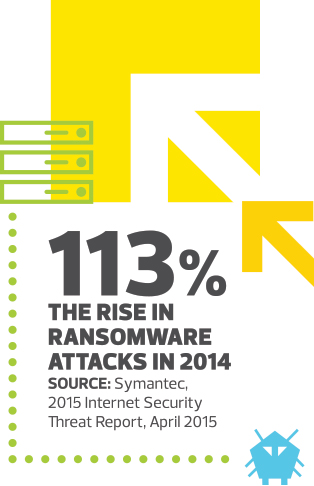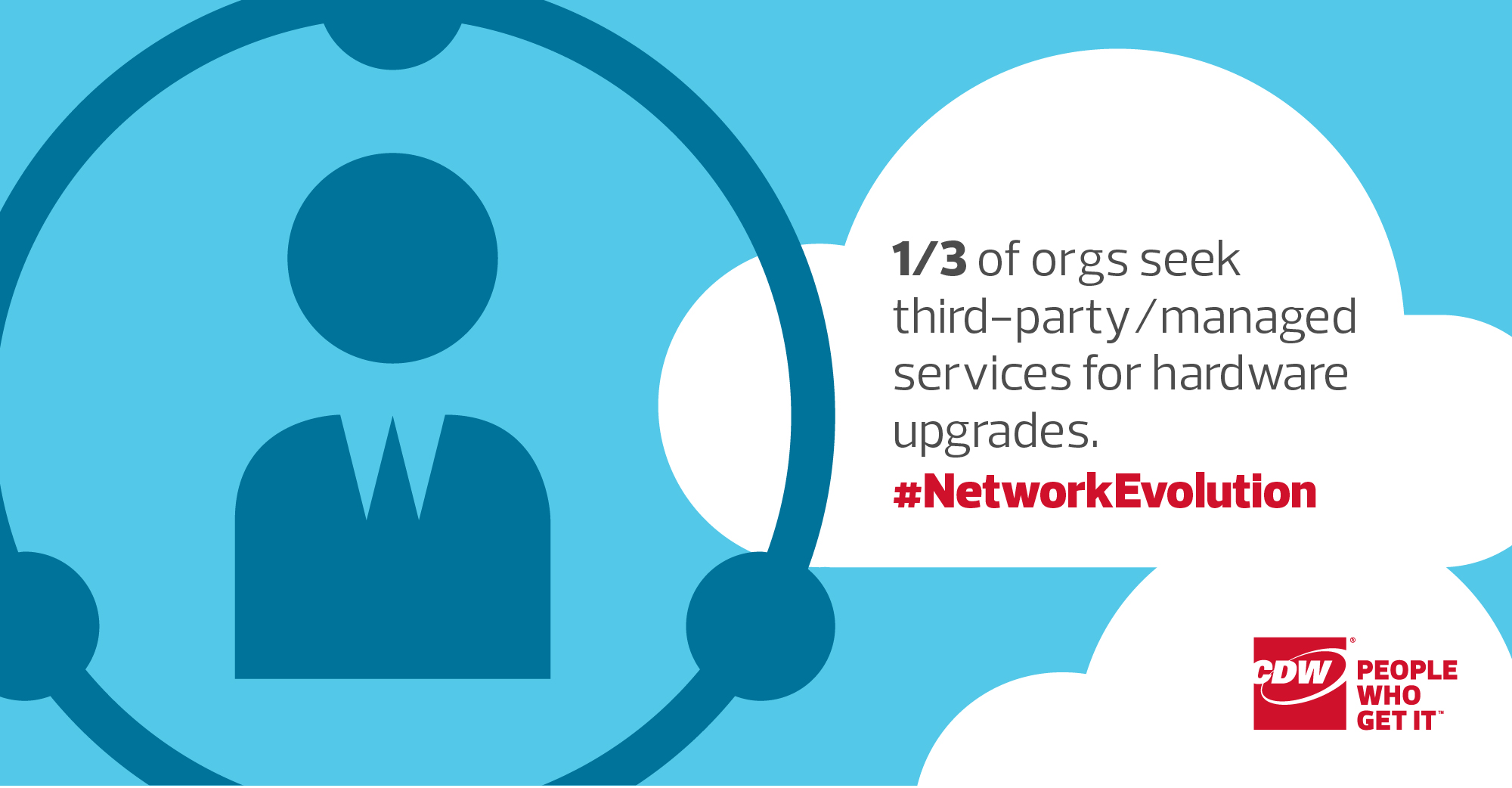Small Businesses Must Heed Cloud, Security, Mobility and IT Services Trends in 2016
Cloud: Computing Adoption Set to Rise
Security: Threats Become More Advanced
Mobility: Is More Important than Ever
Managed Services: IT Extension
More on Small Business Trends:
Users Are Mobile, but Businesses Need App Strategies to Match
Small Businesses Appear Slow to Embrace the Cloud
Cloud Natives Versus Cloud Immigrants: Different Approaches, Similar Goals
How Mobility Gives Small Businesses an Edge with Customers
Managed IT Services Can Help Small Businesses Boost Productivity
Small Business IT Security: Save Money, Save Face
What Small Businesses Want from Managed Services [#Infographic]
Small businesses have long understood that bigger isn’t necessarily better. Thanks to both technology and a variety of delivery models, small firms can stand shoulder to shoulder with their biggest competitors to deliver the products and services customers want most, with competitive prices and high levels of customer satisfaction. That said, employing technology means staying up on the latest trends and subsequent advances.
“There are a host of technologies available in 2016 that are giving small and midsized businesses [SMBs] the applications and devices they need to level the playing field against larger companies,” says Laurie McCabe, cofounder and partner at the SMB Group, a research firm.
These digital disruptors provide a range of business benefits, including the ability to streamline workflows and slash the amount of time users spend on repetitive data entry, while giving managers deeper insights into emerging market opportunities and proactively identifying cyberthreats before they cause significant damage to an organization, McCabe explains.
While many advanced IT capabilities can help SMBs in the quest to become more successful, industry analysts identify four technology trends expected to have a big impact on small firms in the coming year: cloud computing, security, mobility and IT services.

Cloud Computing Adoption Set to Rise
Many small businesses can be divided into two categories: those that began operating before the advent of cloud computing and those born after the cloud era began (often referred to as “cloud natives”).
Cloud natives build their business models around the delivery of cloud-based services and generally eschew hosting IT infrastructure on-premises whenever possible. But even older firms are moving many workloads to the cloud to take advantage of its numerous benefits.
Small businesses are accelerating their adoption of public cloud services for business applications, computing resources and development platforms. For example, a study by Intuit and Emergent Research found that 37 percent of SMBs in the United States already use the cloud in their operations, a number that will jump to 78 percent over the next four years.
Driving these growth rates are cloud benefits such as reduced upfront investments in hardware and software. Quick access to application updates and new capabilities that help them serve customers better and contribute to market growth is another available payoff, McCabe says.
Growing comfort with the cloud concept encourages small businesses to move beyond hosted general applications and email service to more critical platforms. For example, almost one-third of firms that plan to purchase accounting and enterprise resource planning solutions say they expect to choose a cloud offering, McCabe reports.
Small businesses are also citing cloud-based analytics as a prime investment area, according to SMB Group research. “This trend will strengthen in 2016, as more SMBs seek out analytics solutions that are easy to buy and use in order to stay ahead of the market and their competitors,” McCabe says.
And what of lingering concerns about security, which have been a detriment to cloud adoption in the past? McCabe sees shifting attitudes in this area, as well.
“Our survey findings show that many SMBs feel more secure with the cloud,” she explains. “The average small or midsized company doesn’t have a high level of in-house security expertise, while public cloud providers are betting their entire businesses on being secure.”
Security Threats Become More Advanced
Small companies have never been immune to cybersecurity threats, but the coming year will likely see attackers focusing particular attention on smaller firms, security experts say.
The reason: Despite their size, SMBs contain a trove of valuable data, such as intellectual property, personal information about customers, bank account numbers and credit card data.

To get at these riches, hackers are employing new and pernicious tools. The rise of ransomware is one example. If hackers get an opening into an organization via social engineering, some are then blocking access to vital data until the owners make an online ransom payment.
“Victims find themselves in a difficult situation because they’re being asked to trust that the hacker will actually make the data available like they said they would, which often doesn’t happen,” says Karen Scarfone, principal consultant at Scarfone Cybersecurity.
A better response is to diligently back up data as part of a comprehensive information-management strategy, which protects against ransomware. “Good backup policies give you the power to just shut down the affected machine and restore your data on another computer,” she says.
To thwart ransomware before it strikes, businesses should organize regular training sessions to keep users informed about the latest social engineering techniques, as well as how to avoid them. Extortion isn’t the only growing security risk SMB managers must worry about in 2016. Also on the rise is stealthy malware that embeds itself in company networks and siphons sensitive data to distant servers without victims becoming aware of the intrusion for perhaps months or years.
“That’s an area that may affect SMBs more than large companies in the months ahead, because SMBs simply don’t have the right technology in place to defend themselves,” Scarfone says.
To defend against stealthy malware, as well as attacks that target previously undetected vulnerabilities (commonly referred to as zero-day exploits), security managers should look beyond standard anti-virus software and traditional firewalls.
“Detecting unique forms of malware is extremely difficult, which means companies are shifting from prevention to a detection mode,” Scarfone explains. “Certainly, SMBs must continue to deploy all the older tools, but it’s also important to invest in technologies that detect a successful compromise so companies can address it quickly.”
This growing need is fueling investments in spending for next-generation cybersecurity solutions, which FBR Capital Markets says grew about 20 percent in 2015. The category includes next-generation firewalls, which combine firewall, packet inspection and filtering, and intrusion-prevention capabilities to alert security managers when external parties are trying to interact with internal systems. In addition, data loss prevention solutions can block unauthorized attempts to send sensitive data outside an organization. Tools for closely managing activities associated with privileged accounts are also likely to grow in popularity this year.
“These solutions give SMBs a much better chance of detecting suspicious activity in administrative accounts and stop it before damage is done,” Scarfone says.
Small businesses also can contract with security companies for threat intelligence services that collect information about new attacks and can send updates so security managers can initiate proactive defenses.
Mobility Is More Important than Ever
The use of mobile applications and devices has evolved well beyond connecting on-the-go professionals to email and offering limited access to other business applications.
The SMB Group found that 59 percent of companies view mobile solutions and services as “critical” to their business, McCabe says. But mobility can backfire if it’s poorly managed. “Many SMBs don’t have a well-planned strategy for getting the most out of their mobile investments or integrating them with the rest of their IT infrastructures,” McCabe says.
To avoid problems, experts advise IT managers to implement enterprise mobility management solutions that provide a holistic view of company-provisioned assets, as well as tools employed in a bring-your-own-device program. EMM solutions also can centrally administer internal rules for network and information access.
Once management is locked down, small business leaders can look for ways in which mobility can make a bigger impact on their operations.
“New opportunities are emerging for re-engineering business processes, especially when companies combine mobility with other developments, such as the Internet of Things (IoT),” says Roger Kay, president of Endpoint Technologies Associates, a consulting firm.
He advises firms to review existing processes with an eye toward mobility solutions that simplify and automate less productive areas while revealing new business opportunities. For example, IoT sensors can identify when repeat customers who have downloaded a retailer’s mobile app enter a store.
“Companies can use this information to personalize service to customers based on their preferences,” Kay says. “In addition, high-mobility endpoints can help customer-facing personnel, such as wait staff or retail sales associates, enter orders or access product information as they’re talking with clients.”
Managed Services Offer an Extension of the IT Department
Staying agile, innovative and competitive is more important than ever in a year that has already seen extremes in economic volatility. To focus on business issues while still taking full advantage of the latest technology, many small businesses are turning to managed IT services. Experts at service providers can design the right digital environment for each company’s unique requirements and then fully manage the resources once the solution is in place.
“Managed IT services are an extension of a company’s internal operations,” says John Chancellor, CDW practice lead for managed services. “These trusted advisers optimize the IT operations so SMBs can stay focused on succeeding in their markets.“

SMBs are getting the message about managed-services benefits. North American companies currently spend $154 billion for managed services, with SMBs being among the top customers, according to the MSPAlliance. “The four key benefits of managed services are increased operational performance, decreased operational risk, cost avoidance and faster adoption of innovation,” Chancellor says.
Firms have a wide range of choices for managed services. For example, CDW provides computing, storage and networking resources; mobility strategy and management; cybersecurity threat and penetration testing; and collaboration, including telephony services. In addition to offering a full portfolio, CDW also delivers ongoing management and maintenance of the underlying infrastructure and service guarantees, as well as expert, 24/7 support to ensure that users fully capitalize on the technology.
“As soon as companies start investing in people who are not focused on the core product, they introduce overhead into the business,” Chancellor says. “Managed IT services enable SMBs to focus on business activities to keep costs low and profit high.”
By working closely with service providers, IT managers can also quickly scale services as business grows. How can IT managers find the right service partner for their companies? Chancellor offers five suggestions:
- First, choose a technology partner that focuses primarily on the business goals of its clients. Each company is unique, and so too are its challenges and opportunities. Potential providers must understand each client’s business goals rather than simply offering a cookie-cutter service plan.
- Second, look for a partner that values long-term relationships. A trusted adviser will help create an ongoing technology roadmap focused on staying successful and competitive as market conditions change.
- Third, assess a provider’s breadth of offerings. A comprehensive service portfolio means businesses can fulfill their needs from a single provider rather than having to manage multiple vendors.
- Fourth, existing technology pain points must be addressed. Stakeholders should discuss in detail particularly important problems, such as security vulnerabilities or areas where outages have occurred. Then they should get potential partners to deliver a detailed solution tailored to these specific issues.
- Finally, leaders should insist on close communications. They must determine a timetable for formal reviews and data to show the effectiveness of the engagement. This should happen quarterly at a minimum, with less formal meetings occurring with account managers more frequently.
2016 is shaping up to be a year of economic volatility and growth opportunities. Choosing the right technologies and partners will help savvy small businesses quickly react to market changes and battle competitors large and small.
Learn more about small business solutions: https://www.cdw.com/small-









